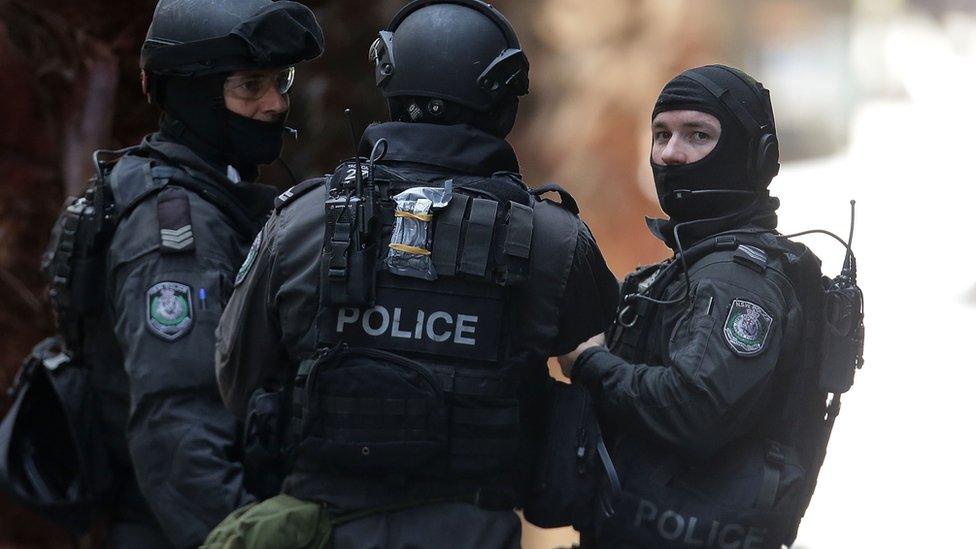One year on: Sydney siege memorial no ordinary news day
- Published

Floral tributes for deceased hostages Tori Johnson and Katrina Dawson are expected to return to Sydney's CBD as the city prepares to mark one year since the Lindt cafe siege
Sydney is preparing to mark one year since the siege at the Lindt cafe, where a lone gunman held 17 people hostage for 16 hours. Three people, including the gunman, Man Haron Monis, were killed.
For Chris Reason, who won Journalist of the Year for his reporting of the siege, marking the anniversary will not be an ordinary news story to cover.
The Channel Seven newsroom where he works is adjacent to the cafe in Martin Place, and he found himself positioned with the police snipers, perched on the balcony of a mezzanine level in the newsroom, overlooking the cafe throughout the siege.
"You can't escape it, it's always there reminding you of what happened, it's unavoidable," Reason told the BBC.
"As much as news men and women like to think events don't get under their skin, that one did."
The first moments of the siege could be seen in the background of the channel's morning programme.
'Political overtones'
Monday 15 December was Reason's first day back at work after six months of leave. When he was asked to cover a suspected armed hold-up at a cafe, he said he was "a bit miffed", thinking he was "past the age of doing petty crime" reports.
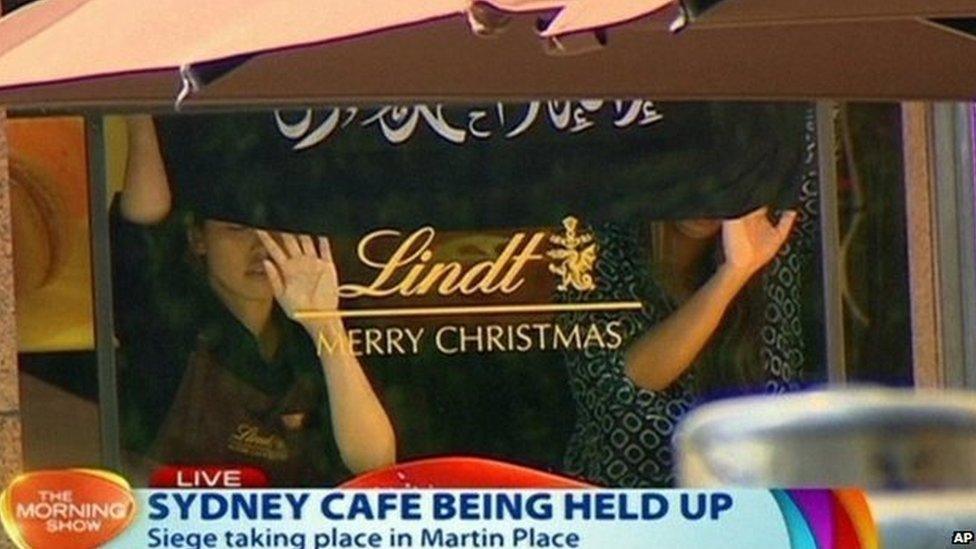
Cameras inside Channel Seven's goldfish bowl newsroom in Sydney's Martin Place, across from the Lindt cafe, captured the first images of the hostage situation.
"It wasn't long after that the black flag went up. We knew that there were political overtones to the event and that ratcheted up quite quickly the response in the newsroom."
That black flag, with the Islamic creed written on it in Arabic - was at first wrongly identified as the flag used by Islamist State militants. Investigators have not so far found a firm link between Monis and Islamist groups - an inquest is still underway.
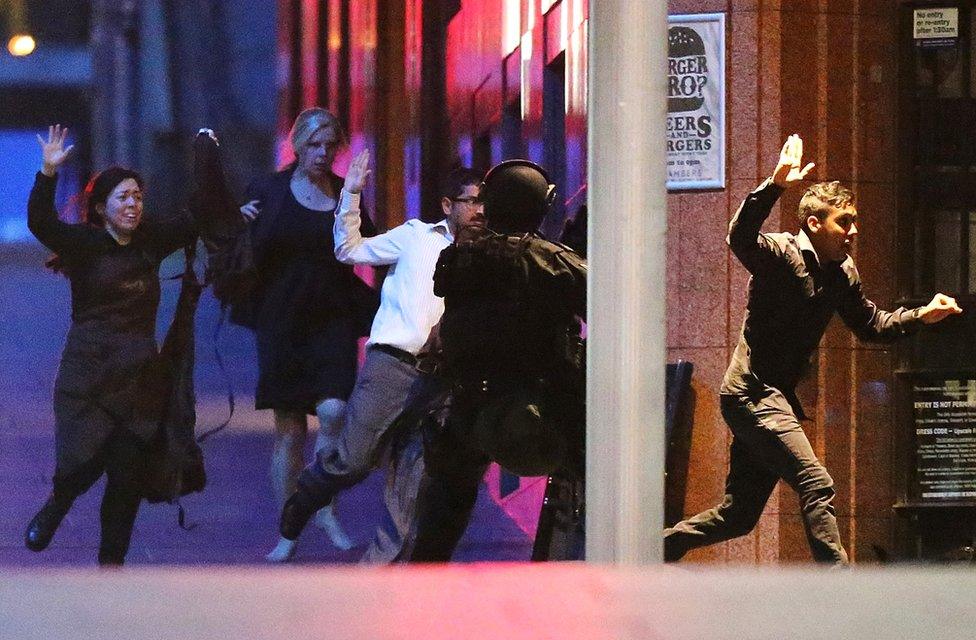
The 16-hour stand-off came to an end with three people dead, including the hostage-taker
The Channel Seven building was evacuated soon after, meaning Reason and his colleagues had to file to newsrooms in others states from makeshift posts.
But in the early evening, Reason and cameraman Greg Parker were allowed back inside, though police warned them it was possible Monis's backpack contained an explosive device which could threaten the building.
"They read an insurance waiver almost, and asked 'are you prepared to go in and face that?' But just 30m away, to see the hostages inside the cafe, we saw what a real threat looked like."

'Lives were in the balance'
Parker's camera played a vital role in feeding live up-close pictures to police command centres.
"Greg could clearly see straight into the windows what was going on inside and it was an enormous strategic asset to police," Chris said.
"There were two rules - none of those pictures could go out live and none of the pictures we sent out could show police movements."

How the Sydney siege unfolded
A gunman enters the cafe early on 15 December and has a coffee before holding a gun to manager Tori Johnson's head.
The gunman is identified as Man Haron Monis, an Iranian self-styled Muslim cleric given asylum in Australia.
Monis already faces a string of criminal charges, including sexual assault and being an accessory to the murder of his ex-wife.
Several hostages managed to escape the cafe which is surrounded by hundreds of armed police.
Police commandos storm the cafe in the early hours of 16 December, after Monis shoots Mr Johnson dead.
Monis and cafe customer Katrina Dawson die in the police operation.

They could see Monis was using an iPad in the cafe, and that he would be able to follow any information they broadcast.
"There was so much more I wanted to say but it wasn't worth saying. Lives were in the balance throughout that night."
Chris said it was a rare moment where he was not acting on purely journalistic terms.
"We suppressed all this information throughout the night. In terms of objectivity it was difficult."
In 2015, Reason was honoured with multiple awards, including Australian Journalist of the Year, for his reporting on the siege, something he described as bittersweet.

7News journalists Chris Reason, Melissa Doyle, cameraman Greg Parker, and colleagues were awarded the Most Outstanding News Coverage Logie Award in May
"It's been a really difficult position to be in, to be congratulated and patted on the back for something as awful as it was."
He will be covering a twilight memorial event in Martin Place on Tuesday, and says it will be a story "more burdensome than most".
It is a sentiment shared by his colleagues, including one who clearly remembers passing Man Haron Monis in the cafe that morning.
"They still think long and hard about what would have happened if it was a minute earlier," Chris said.
- Published29 January 2015
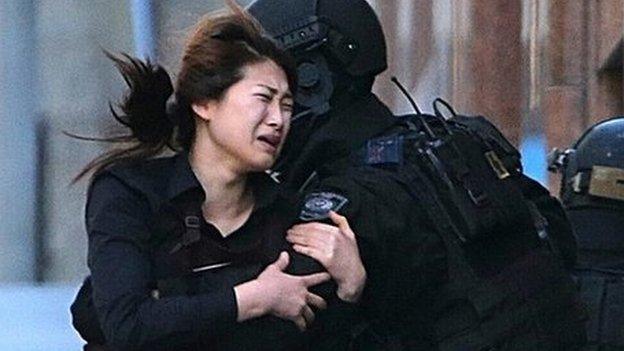
- Published29 January 2015
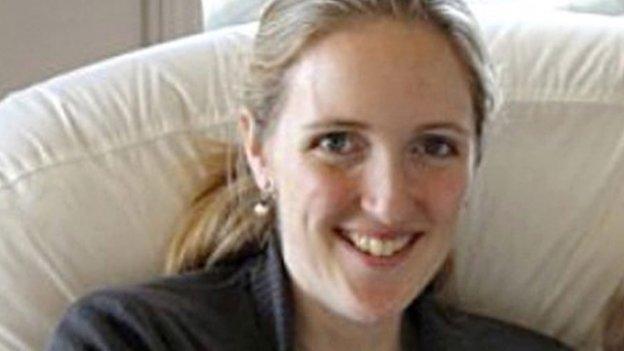
- Published16 December 2014
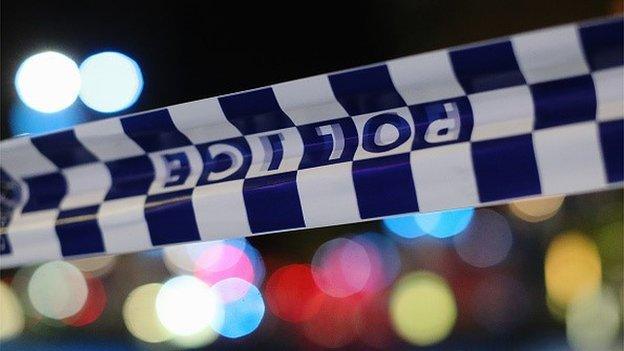
- Published15 December 2014
